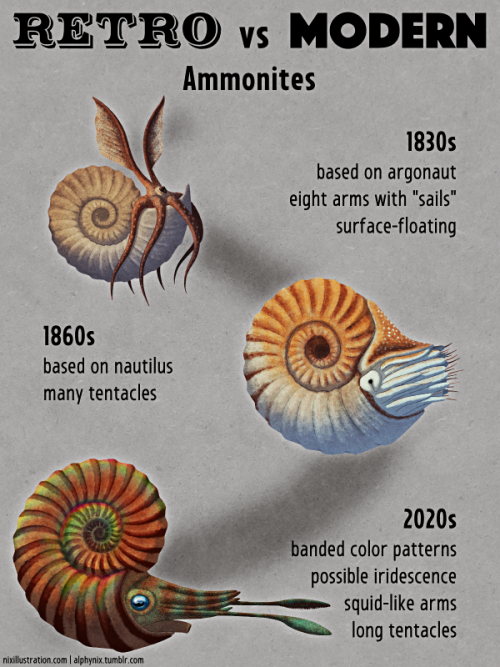Latest Posts by startdoost - Page 4
Thank you dear Eurovision audience. Not only a black ocean but also booing but what did the tv station do? Fake cheering....but at least we know how it really went down. I am so not watching btw
do eastern hognoses get attacked by toads a lot? them being immune to their poison seems really specific
Quite the opposite! Many toads secrete toxins to avoid being eaten (most animals don't like eating poisonous food).
However, because they really like eating toads, hognose snakes have evolved specifically to be immune to those toxins. There are many examples of this kind of co-evolution in the animal kingdom (another common one are garter snakes and salamanders).


Hey where's that one post about the sturgeon and other fish that were waaaayyyyy evolutionarily far apart but still made viable offspring during a control test and all the science hippies were freaking out I've lost this post but it has never left my mind
helloo!! sorry if this is a question u get a lot, do you know any good website to keep up with marine animals news?? and for research??
It's a good question to ask, especially in a world where you have to sift through a lot of misinformation surrounding science (and, to set a good example, I will now be adding references in the notes for my information, particularly if I mention specific studies).
For news, Science.org, SciTechDaily, NewScientist and Nature.com are all websites I have used for keeping up to date with global marine biology news/research although it's always possible to use any news site as long as you ensure they are reliable (e.g. do they include references to research for further reading? does the content of the referenced research match the claims they make in the article? is the site likely to be biased towards a particular viewpoint?)
For research, there are tons of databases storing centuries of marine biology research. Many people like to recommend Google Scholar and I always think it's a good starting point for beginning scientific research but you can't always trust it to be a reliable tool.
ResearchGate, Wiley Online Library, ScienceDirect are all good places for peer-reviewed scientific articles (and I'm sure the people over at @jstor will assure you of the strength of their database too) although, keep in mind, you might have to search through many other databases if you want to dodge paywalls to access full articles.
If anyone else has any other suggestions, feel free to mention them in the notes!
🐙 Daily Cephalopod Fact: 🐙
Flamboyant Cuttlefish: Cuttlefish have a specialized, hollow feature called a cuttlebone that helps the animal maintain buoyancy by adjusting the levels of gas and liquid in its chambers.1 Because the flamboyant cuttlefish’s cuttlebone is relatively small, this species can only float and swim for short amounts of time. Instead of swimming, flamboyant cuttlefish “walk” along the ocean floor using their arms. They also have a highly developed sensory system that helps them respond and adjust to their surroundings.





Snails in the genus Julia have a bivalved shell, like a clam!
Even though they have a clam like shell, with 2 sections, they are in fact snails (class Gastropoda). They are marine snails, found throughout the Ino-Pacific. There are 6 species which are various shades of green. Julia are tiny, only reaching a length of up to 6 mm long. They feed on algae, and incorporate the chloroplasts from the algae into their bodies. Some of the chloroplasts remain photosynthetic, and the snails are able to feed on the products of this photosynthesis. This process is called kleptoplasty.
Photos: Julia sp. from Australia - profmollusc | Inaturalist cc; Julia exquisita from Reuinion Island - Alexandre LaPorte | Wikipedia cc

I mean, I’m compelled to share for the image alone
but if you’d like to read the full article: X

Did you know that Chiton (specifically the wandering meatloaf chiton) produce the hardest known biologically made material? Their shells are also covered in microscopic lenses that combine to almost make their body into one compound eye. Why they need to look so much, who knows?
I met some relatives of my beloved leatherleaf slugs in the mangroves of Singapore, the onch slugs! they’re perhaps some of the slowest-moving animals I’ve ever encountered; this is one in a hurry:
the species pictured is a Platevindex, which are particularly interesting to me since their backs are studded with extra eyes! the dorsal papillae each have a little black dot that’s a photoreceptor, which helps the slug detect changes in light exposure.


onchidiids are marine animals, living on costal rocks and in mangroves, but breathe air and spend much of their time out of the water. like the leatherleafs, they’ve got a dry, tough hide that maintains water balance, but Platevindex takes that to an extreme—when I picked one up, it felt like a vulcanized rubber tire!



I just discovered the blanket octopus. Would you do a fact on them if not already done? 👀
Sure friend! I am a daily fish fact account only, but I simply couldn't not say something about the magnificent blanket octopus :)

Here is a blanket octopus female! How do I know that? Simple: the males of the species only reach about 2 and a half centimeters, while the females can be as large as two meters long! The species is named after this gorgeous lady's webs that connect to her arms.
"Blanket octopus" refers to four different species actually! And they're all immune to the extremely venomous Portuguese man o' war, young females and males will in fact rip out a dangerous and venomous tentacle from these animals to defend themselves! It is extremely interesting and exciting what kinds of things octopuses are capable of :)

A Chart of Various Cephalopod Orders

Retro vs Modern #17: Ammonites
Ammonites (or ammonoids) are highly distinctive and instantly recognizable fossils that have been found all around the world for thousands of years, and have been associated with a wide range of folkloric and mythologic interpretations – including snakestones, buffalo stones, shaligrams, and the horns of Ammon, with the latter eventually inspiring the scientific name for this group of ancient molluscs.
(Unlike the other entries in this series the reconstructions shown here are somewhat generalized ammonites. They’re not intended to depict a specific species, but the shell shape is mostly based on Asteroceras obtusum.)
1830s
It was only in the 1700s that ammonites began to be recognized as the remains of cephalopod shells, but the lack of soft part impressions made the rest of their anatomy a mystery. The very first known life reconstruction was part of the Duria Antiquior scene painted in 1830, but to modern eyes it probably isn’t immediately obvious as even being an ammonite, depicted as a strange little boat-like thing to the right of the battling ichthyosaur and plesiosaur.
The argonaut octopus, or “paper nautilus”, was considered to be the closest living model for ammonites at the time due to superficial similarities in its “shell” shape, but these modern animals were also rather poorly understood. They were commonly inaccurately illustrated as floating around on the ocean surface using the expanded surfaces on two of their tentacles as “sails” – and so ammonites were initially reconstructed in the same way.
1860s
While increasing scientific knowledge of the chambered nautilus led to it being proposed as a better model for ammonites in the mid-1830s, the argonaut-style depictions continued for several decades.
Interestingly the earliest known non-argonaut reconstruction of an ammonite, in the first edition of La Terre Avant Le Déluge in 1863, actually showed a very squid-like animal inside an ammonite shell, with eight arms and two longer tentacles. But this was quickly “corrected” in later editions to a much more nautilus-like version with numerous cirri-like tentacles and a large hood.
The nautilus model for ammonites eventually became the standard by the end of the 19th century, although they continued to be reconstructed as surface-floaters. Bottom-dwelling ammonite interpretations were also popular for a while in the early 20th century, being shown as creeping animals with nautilus-like anatomy and numerous octopus-like tentacles, before open water active swimmers eventually became the standard representation.
2020s
During the 20th century opinions on the closest living relatives of ammonites began to shift away from nautiluses and towards the coleoids (squid, cuttlefish, and octopuses). The consensus by the 1990s was that both ammonites and coleoids had a common ancestry within the bactridids, and ammonites were considered to have likely had ten arms (at least ancestrally) and were probably much more squid-like after all.
Little was still actually known about these cephalopods’ soft parts, but some internal anatomy had at least been figured out by the early 21st century. Enigmatic fossils known as aptychi had been found preserved in position within ammonite shell cavities, and were initially thought to be an operculum closing off the shell against predators – but are currently considered to instead be part of the jaw apparatus along with a radula.
Tentative ink sac traces were also found in some specimens (although these are now disputed), and what were thought to be poorly-preserved digestive organs, but the actual external life appearance of ammonites was still basically unknown. By the mid-2010s the best guess reconstructions were based on muscle attachment sites that suggested the presence of a large squid-like siphon.
Possible evidence of banded color patterns were also sometimes found preserved on shells, while others showed iridescent patterns that might have been visible on the surface in life.
In the late 2010s the continued scarcity of ammonite soft tissue was potentially explained as being the same reason true squid fossils are so incredibly rare – their biochemistry may have simply been incompatible with the vast majority of preservation conditions.
But then something amazing happened.
In early 2021 a “naked” ammonite missing its shell was described, preserving most of the body in exceptional detail – although frustratingly the arms were missing, giving no clarification to their possible number or arrangement. But then just a few months later another study focusing on mysterious hook-like structures in some ammonite fossils concluded that they came from the clubbed tips of a pair of long squid-like tentacles – the first direct evidence of any ammonite appendages!
A third soft-tissue study at the end of the year added in some further confirmation that ammonites were much more coleoid-like than nautilus-like, with more evidence of a squid-style siphon, along with evidece of powerful muscles that retracted the ammonite’s body deep inside its shell cavity for protection.
Since ammonites existed for over 340 million years in a wide range of habitats and ecological roles, and came in a massive variety of shapes and sizes, it’s extremely likely that their soft anatomy was just as diverse as their shells – so there’s no single “one reconstruction fits all” for their life appearances. Still, at least we now have something less speculative to work with for restorations, even if it’s a bit generalized and composite, and now that we’re finally starting to find that elusive soft tissue there’s the potential for us to discover so much more about these iconic fossil animals.
———
Nix Illustration | Tumblr | Twitter | Patreon

For the Bigfin Reef Squid, mating is a serious business.
New research, led in part by Museum scientist Sam Cheng, shows that a male will scope out nesting sites and scare off rivals in order to improve his mating success. In this study, Cheng explains how this “probing behavior” could be a type of mate-guarding, a mating strategy in which males attempt to prevent a mate’s eggs from becoming fertilized by a rival. Ultimately, this research can help inform biodiversity and conservation efforts.
Photo: Courtesy of Rhododendrites/Wikimedia Commons
via: American Museum of Natural History


Snails in the genus Julia have a bivalved shell, like a clam!
Even though they have a clam like shell, with 2 sections, they are in fact snails (class Gastropoda). They are marine snails, found throughout the Ino-Pacific. There are 6 species which are various shades of green. Julia are tiny, only reaching a length of up to 6 mm long. They feed on algae, and incorporate the chloroplasts from the algae into their bodies. Some of the chloroplasts remain photosynthetic, and the snails are able to feed on the products of this photosynthesis. This process is called kleptoplasty.
Photos: Julia sp. from Australia - profmollusc | Inaturalist cc; Julia exquisita from Reuinion Island - Alexandre LaPorte | Wikipedia cc

“New” (extinct, but we just discovered it) vampire squid just dropped
Meet the vampyrofugiens atramentum
Source


